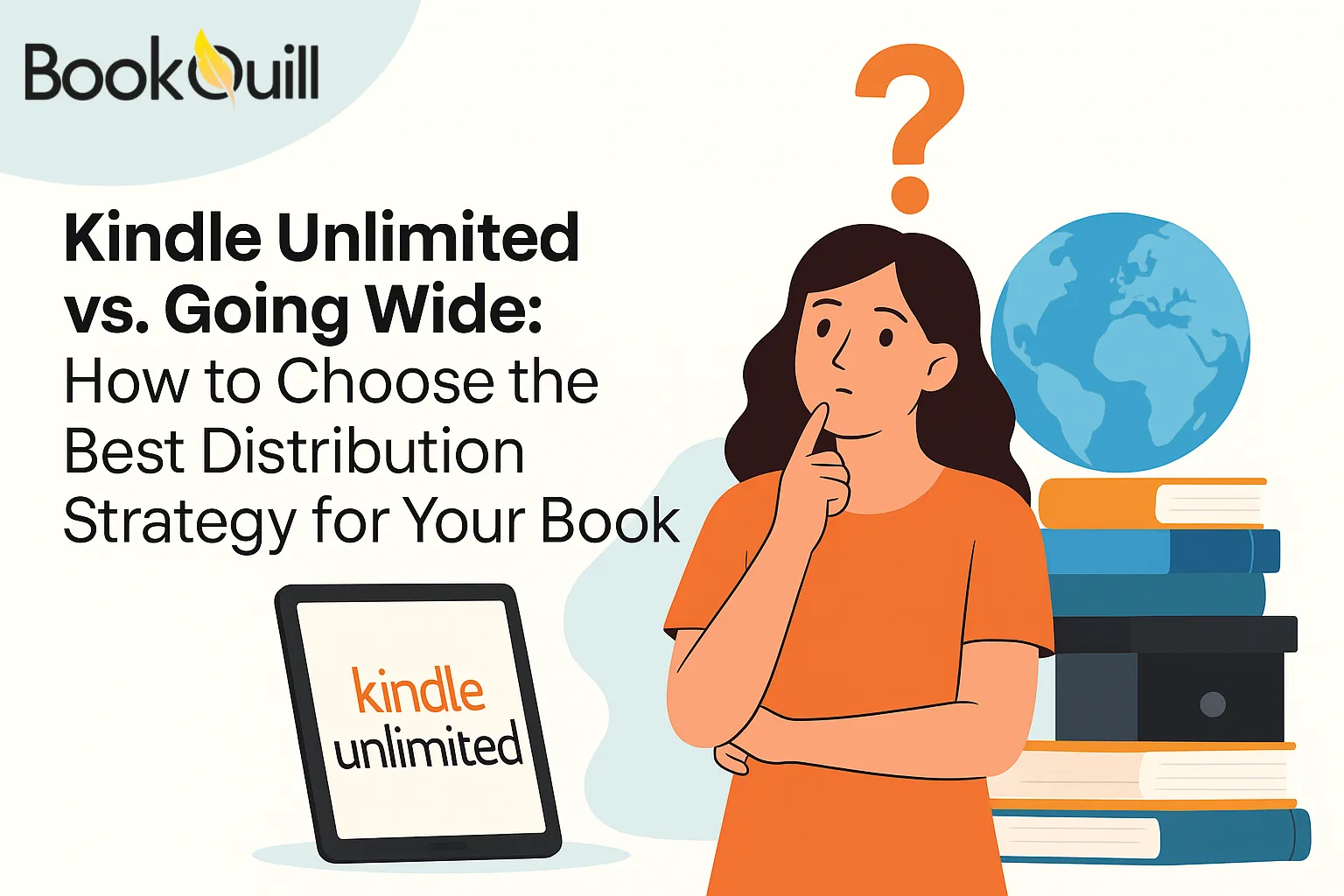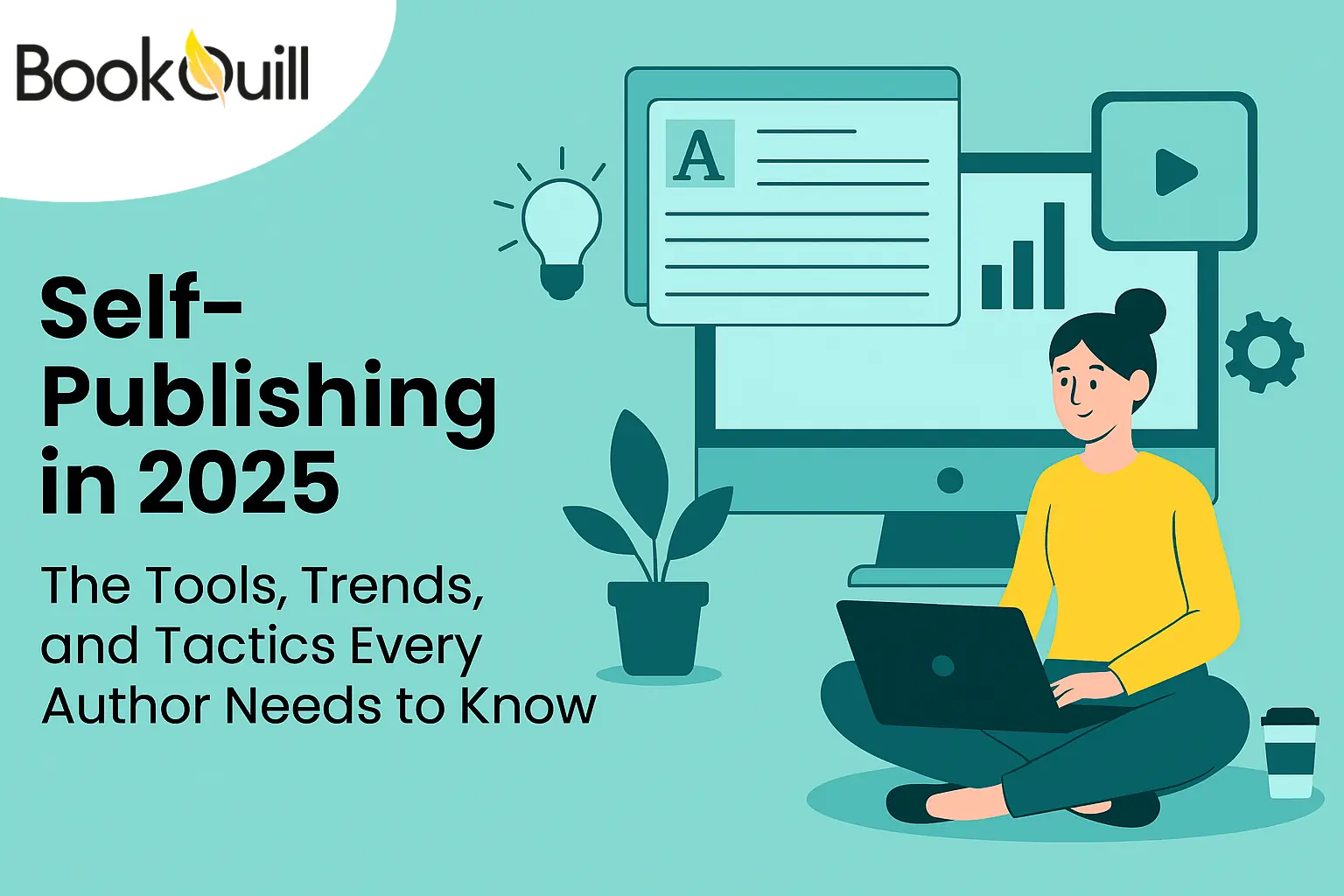Table of Contents
Explore Blogs
Trending on Ebook
Rising Action: The Core of the Narrative (Including Examples)

As a writer, if you want to write a book that keeps readers engaged and encourages them to keep turning pages until the very last sentence, you need to master the secret ingredient: Rising Action. Do you know what this is? Do you know how it impacts the story? No? Well, don’t worry; we are here to help you out.
Key Takeaways
- What is the meaning of rising action? Rising action refers to the series of events that follow the exposition and build up to the climax. It involves the development of the central conflict, character development, and increasing tension.
- Effective rising action captivates readers, making them emotionally invested in the characters and their journeys.
- It serves as the main part of the story, leading the reader through the unfolding events.
- Explore how your favorite shows like Bridgerton and Game of Thrones have used rising action to keep the audience intrigued.
What is a Rising Action?
The rising action is what comes after the exposition. It includes everything, like conflicts, drama, action, and incidents, leading up to the climax. These elements form a series of events that develop the story, ask questions, and introduce obstacles. They highlight the internal and external conflicts that must be overcome. As a writer, this is the crucial moment where you need to create tension and suspense that captivates readers and keeps them on the edge of their seats.
Readers absolutely love heightened tension and conflicts, and this is what serves as the engine of fiction. The more the tension, the more people will get invested and will feel good about the book when reaching climate.
The main purpose of rising action is to deepen the reader’s connection to the characters, making them care about the outcome or how the book will end. Mastering this element is extremely important because, without it, you can’t really follow any common story structure, like the hero’s journey or the three-act format.
What is Rising Action in a Plot?
-
Meet the Protagonist and Their Big Dream
To start your story, introduce your main character (protagonist). Make sure their goals are clear. It helps set the direction of the story. It even keeps the audience attentive. Strong goals are important because they keep everything on track. It doesn’t have to be something as simple as “The hero wants to buy a boat.” It should be more complex, like “After he lost something in life, the hero now has a mission to find his long-lost brother. Someone whom he thought was dead. How he travels around the world to find him. At the same time, he fights the increase in crime due to drug dealing. He faces police corruption in his city.”
This type of setting adds depth to your story. And it sets the stage for tension and drama. These intense actions will bring your hero closer to the goal. But it also introduces the obstacles they will face, including enemies (villains).
-
Introduce Conflict – Establishing that The Path Won’t Be Easy
Every great story needs conflict to be compelling. The whole point is that the protagonist is struggling with obstacles. However, that prevents them from achieving what they want; if there is no conflict, the story will be simple and uninteresting. If no action is taken, readers will be disinterested.
Think of Frodo in The Lord of the Rings. His mission is to destroy the One Ring of Mordor. But it’s not that smooth. Along the way, he and his friends encounter Ringwraiths, orcs, trolls, and swamps filled with deadly traps. These obstacles move the plot forward. It creates excitement and danger. It keeps readers hooked. The ever-increasing threats make the job exciting because it’s clear that achieving your goals isn’t easy.
The best way to introduce conflict is through the use of motivating events. They are the moments that drive the story forward and help build tension. These events push your character from the familiar into the unknown and present challenges that steadily increase. This progression sets the stage for the rising action and helps you write satisfying falling action examples to complete the plot smoothly.
-
Celebrate the Little Wins Along the Way
Don’t let your hero lose every battle as the story progresses. That’s not fun for the reader and can be frustrating. The rising action is not about continued failure. It’s about balancing small victories along the way to make it sound realistic. These successes give your protagonist hope. It inspires them (and the reader) to keep going.
At the same time, it also shows that the opponent is stronger. Ultimately, the hero triumphs or resolves the issue, but the escalation of conflict presents obstacles from their enemies. The heroes’ small victories and rising tensions with their enemies create suspense. It keeps readers on the edge of their seats. They keep reading and wonder who will win in the end.
-
Test the Protagonist’s Beliefs -Internal Conflicts
One interesting way to generate action is to challenge your main character’s beliefs. What does your hero truly believe? They have strong faith. Is he committed to justice, or does he have some ideas about how the world should work? You can take those beliefs and test them for what they are.
You need to push your characters into situations. Anywhere, they are forced to go against what they believe. Internal conflicts happen when they face external obstacles. They start questioning their faith, have a loss of trust in others, or rethink their values. As the story progresses, they face these moments of self-doubt and internal struggle. You need to add layers to your character. The increasing action makes it even more intense.
When your protagonist’s beliefs are challenged, however, readers will become more invested in how they will overcome these challenges. Or will those challenges be overcome at all by the hero?
-
Raise the Stakes (Make It Personal)
The tension should increase as you move towards the climax. More action is definitely higher. And one of the best ways to do this is to make bets with your hero. What are they most interested in? What will hurt most about their loss?
When the stakes are deeply personal to the reader, the action becomes more intense.
For Example?
In Die Hard, for example, John McClain isn’t just trying to stop terrorists. He tries to save his wife, who is being held hostage. Suddenly, the stakes were much higher for him. And the audience feels danger in everything he does.
Add personal stakes to your hero’s journey. It increases the intensity during the story’s rising action and climax, too. It’s not just about achieving goals. It is about what they will lose if they fail.
-
Show How the Hero Has Grown
When your story is near its climax, your protagonist may change. By consistently facing all the conflicts and challenges, the hero changes. The small victories that you showed earlier must be transformed in some way. They shouldn’t be the same people as they were at the beginning of the story.
Show readers how these experiences changed your character. Are they stronger? Clever? More considerate? Or perhaps more positive or negative? This climax changes the feel completely. Because the protagonist has grown as a person through their journey, this change makes the upcoming action scenes more impactful and meaningful. This is because it focuses on the risks. And it creates anticipation for the story.
Examples Of Rising Action
-
External And Internal Conflicts
Before we talk about things that cause conflict internally or externally, let’s start with the basic information first. What is conflict? And why do romantic stories need such conflict?
Think about it: What if you read a romance novel in which the two main characters are already in love? And there’s nothing stopping them from being together? The story probably isn’t much, right? It will feel flat and boring. Readers want to see more than just a happy couple; they want to see the whole journey. The highs and the lows of their relationship, and everything in between.
In any good romance, readers want to see characters change. The characters grow as the story progresses. They want to see character development. For this to happen, the characters need to overcome internal emotional obstacles. Before they reach a happy ending. Readers crave emotional conflict.
For example, in Me Before You – a very tragic love story where the evolving relationship of two main characters, Louisa Clark and Will Traynor, are explored. The novel’s rising action builds emotional tension and complexity. It starts with the conflict of Lousia being a caregiver or will but still not being able to bond with him because he is bitter and resentful. As the story progresses, we see Will opening up to her, and then the truth hits her that he is committing suicide in six months, and that’s when rising action comes where Lousia plans trips to make him realize that his life is still worth living. They share intimate moments on vacation – this is where tension grows. It puts us, as readers, on edge regarding whether or not we will change his decision. People absolutely love the emotional fallout and the bittersweet moments, which is what makes the climax heart-wrenching and yet impactful.
-
Facing Roadblocks
Roadblocks are challenges or obstacles. It prevents the main character from achieving their goals. These roadblocks mostly appear in crime thrillers. In these thrillers, the character can get injured or kidnapped. But there are obstacles in every type of story.
For example, in the movie The Flatsher, there is a heartwarming introduction to Beth O’Leary, the two main characters. Tiffy and Leon Sleep in the same bed in an apartment to save money. But they have never been together due to their inconsistent schedules.
They left each other notes and began to communicate. Slowly, they realized that they were falling in love. But every time they tried to meet in person, something blocked them. The roadblocks continue, and by the end, readers are curious to know if the couple will finally be together. These roadblocks also contribute to the rising action of the story.
-
Building Tension and Suspense
When it comes to building tension and suspense through escalating action, Stephen King (American author) is a master. Especially in his best-selling mystery novel “The Shining.”
In The Shining, the Torrance family moves to a hotel for the winter. The rising action begins when Jack Torrance takes on the job of hotel caretaker. His son Danny, who has special psychic abilities, is called “the shining,” However, he starts sensing strange and scary things in the hotel.
As time passes, Jack slowly loses his mind because of the hotel’s dark influence. The tension grows as Jack becomes dangerous. He puts his wife, Wendy, and Danny in danger. The story creates suspense as Wendy and Danny must escape before it’s too late.
Think about how you can use the action to maintain tension in your story.
Do you want to create standout action scenes in your story? Consider where your main character begins and where he must end. Both physically and emotionally, think about who they are. Also, the internal struggle and the challenges they will face along the way. (external conflict) This creates an epic journey filled with tension and excitement.
Popular Books and Shows That Mastered Rising Action
-
You
In the series, the main character has internal conflicts due to his tragic past. He explores those conflicts throughout the series through his narration. Even though he thought he was helping the woman, he was cared about. However, he felt guilty about his method of stealing. That’s why he lies and hides. It shows that he is unsure and sometimes feels ashamed of what he does. This internal conflict is hinted at in the show. But it wasn’t fully revealed until the fourth season to hype the audience more.
On the outside, he also faced clear conflicts like fear of being arrested. He knows that killing is bad. Stalking is bad. And lying is manipulative. However, he believes it’s all for a good reason.
Throughout the series, he subtly avoids being caught by characters like the police. Still, he faced many close calls. The truth might come out in the future as it looks like he will be discovered by the police in the end. He also commits violent acts like murder. It increases his chances of being caught. This combination of internal and external conflict builds the rising action of the story. It creates tension and attracts viewers and readers.
-
Bridgerton
In a relationship, everyone brings past experiences and calls them baggage. Anthony Bridgerton is the older brother of the Bridgerton family. He carries a lot of the baggage. After losing his father at age 18, he felt deep pain and an irrational fear of dying young. He believes that he will not live more than 38 years.
Kate Sheffield, on the other hand, has also faced her own struggles. After her mother died, her father gave her half-sister, Edwina, and remarried. They relied on Edwina and had a good marriage. This increases the pressure in their lives of her being a stepdaughter.
In the first episode, Anthony and Kate argue. Anthony sees Kate as an obstacle to his marriage to Edwina. Meanwhile, Kate thinks Anthony is untrustworthy. He has a bad reputation, according to her. Their arguments reveal internal conflicts at each point of the story.
Things change during a thunderstorm. When Kate experiences a panic attack due to her fear of storms, Anthony comforts her. And they began to understand each other better. Their relationship takes a major turn when Anthony confronts his fear of bees. After the bee stung Kate, He panicked and tried to help her. Later, he revealed his weakness.
This brought them closer together. But their feelings are complicated. Anthony struggles to accept his love for Kate because he is afraid of dying young. Meanwhile, Kate is confused by his emotionally distant personality. These conflicts create the rising action in their story as the two of them face their past wounds. They learn from each other’s weaknesses, which will ultimately lead to a bright future.
-
Game of Thrones
Tyrion is a character from Martin’s famous series. He is one of the few main characters people have followed since the first A Game of Thrones book. Five generations have passed. So, he was a dwarf from a wealthy family and related to the king. Even though he is rich. However, the world of knights and warriors was not kind to him. This made him feel rejected. People started calling him with the nickname “Imp.”
“A mind needs books as a sword needs a whetstone if it is to keep its edge.” Tyrion Lannister to John Snow in A Game of Thrones.
He is haunted by his past, but his brother Jaime is kind. But his sister Cersei bullied him. Their father, Tywin, blamed him for his mother’s death during childbirth. This makes Tyrion a complex personality. This causes him to drink heavily and find temporary comfort in relationships. Outwardly, he faces challenges due to the size of the world, which values strength. He struggles with the way others view him. His dream is to become the lord of his family’s home Casterly Rock. Even if he fulfills the necessary duties, these internal and external conflicts build the rising action.
Wrap Up
Yes, rising action is the weapon that makes the story interesting and worth reading, and without it, the entire book can fall flat. You’ll find rising action in every sort of media that you consume, but to ensure that it adjusts well into the story and has a strong impact on the readers, you need to perfect the preceding structure of the story and climax as well.
Before you start writing your story, take a moment to plan what events will take place and how they will unfold. You’ll need plenty of plot points to keep your readers interested throughout the novel. Now, make a mind map of possible rising actions you can include. Develop it around your characters so the reader can explore their strengths and weaknesses. Increase the tension by adding twists and subplots that would excite and surprise your readers and end it with an exciting climax.
Keep in mind that you have the freedom to challenge your characters and push them to their limits; this is what will make readers root for them and contribute to your book’s success.
FAQs
What’s the difference between the rising action and the climax?
Rising action includes the events that lead up to the climax, making things more exciting and tense. The climax is the key moment in the story where the main conflict is at its highest point and often gets resolved.
How long should the rising action be in a story?
The length of the rising action varies based on the story’s overall flow. Longer stories, like novels, can take several chapters, while short stories might be much shorter.
Can a story have more than one rising action?
Yes, it can! In more complicated stories, there might be several rising actions, especially if there are multiple subplots or conflicts leading to different climaxes.
What happens if the rising action is weak?
If the rising action isn’t very strong, the story may feel dull or unexciting. This can lead to the audience not feeling very involved, making the climax less exciting, too.




